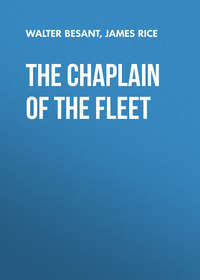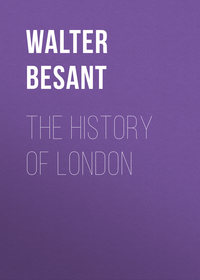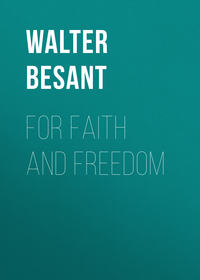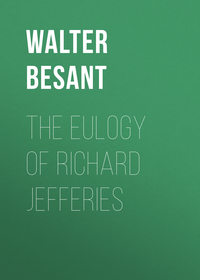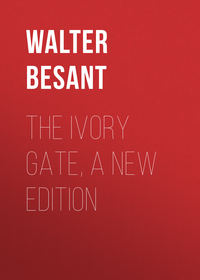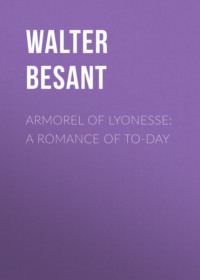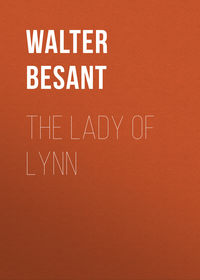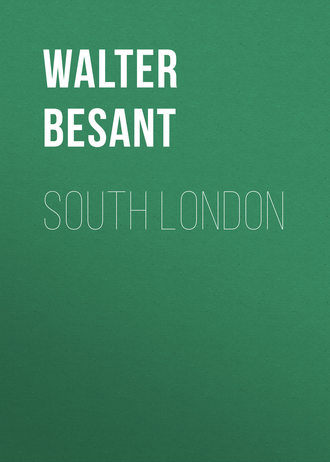 полная версия
полная версияSouth London
How are these two millions distributed?
There are, in fact, four layers. First, there is the 'submerged' element, the people of the slums of which mention has been made. Their numbers and their proportion to the whole I know not. Next, there are the working people, those for whom the long lines, the endless lines, of barracks called model lodging-houses, have been built. Here they live by the hundred thousand – by the million: there are more than a million working men in South London. For their use are the shops of the Borough, chiefly provision shops, and the public houses. The third layer is found on a slip of ground, of which Newington and Kennington may be taken as representative: it consists principally of lodging-houses for clerks. The fourth layer is that of the suburban villa, from the little semi-detached cottage to the stately mansion. The 'High Street,' filled with shops, is for the villas.
Now, the whole of this immense population lives upon the City. The bread-winners go in and out every day; the local shops provide for the houses, and are paid out of the money made in the City; the local doctor, the local house agent, the local schoolmaster, the local clergyman, all receive their share of the money made in the City; even if there be, here and there, a literary man, his wares are bought by the money made in the City; the artist looks for his patron to the City; the working man, whatever his work, is paid out of the City, so that the first function of the City is to feed and supply all these millions. If at any time the trade of the City were to decay, these suburbs would decay as well; if the decay were gradual, they would slowly cease to spread, begin to show empty houses and deserted streets; if the decay were to mean ruin, the suburbs would themselves be speedily deserted. Then would be seen a deserted city on a scale never before equalled. Tadmor in the Wilderness would be a mere little wheelbarrow full of stones compared with suburban London given over to decay and wreck.
Two millions of people, most of whom belong to the working class! The brain reels at thinking of this teeming multitudinous life; these armies of men, women, and children living in the slums and in the huge, unlovely barracks. The very number makes it impossible to grasp the enormity of the mass; the vastness of the population makes one feel as if individual effort would be absolutely useless. In a sense it is useless, because it can only touch one or two, and what are they among so many? But in another sense, as I will presently show, individual effort may produce consequences both deep and widespread.
It seems, again, when one contemplates this mass of humanity – this compact round ball of men and women, to make which two millions have been brought together – as if any one life was nothing, as if the life of any one out of the heap – any girl, any lad – was wholly unimportant and trivial, however that life were spent. That is not so: every heap is made up of atoms; the influence of the individual is as great in a densely populated place as in a village. One example is precious – beyond all price – in a model dwelling-house of Bermondsey as in the most retired community of rustics. It is very easy to generalise from the mass: the dweller of the slums stands before the mind's eye, beery, unwashed, in rags, inarticulate, his brain filled with thoughts which may better be described as suspicions, desirous of nothing but of food, drink, and warmth. That is what we think of him. It is because we do not know him. Ask those who go down among these people habitually, they will tell you of differences and distinctions among them as among ourselves, of memories of better things, of resignation rather than despair, and, at the very worst, of traits of generosity and unselfishness worthy of a clean cottage and the air of a village green. We must be very careful how we form general conclusions about men and women.
But – two millions of people! And every one of them wanting all the time what he thinks will make his life more happy. For the riverside folk the wants are few, but they are daily wants. With them, literally, it is a question of daily bread. Happy are the people whose wants are more numerous and their happiness more complex!
Let me terminate this chapter by a brief account of certain work of a philanthropic kind which is characteristic of the place and of the time. Many and various are the attempts and the associations and the machinery for raising some of these people and for keeping others from sliding down. There are the parish clergy, of late years better organised than at any previous time, more active, and more largely assisted; they have planted evening schools and clubs, for boys and girls. One must put the Church of England first, not only because her clergy began the work of rescue, but also because hers is still the larger part. There is, next, the indirect work of the medical students of Guy's and St. Thomas's, who go in and out among the worst courts, tolerated because they come to doctor the sick, and do not ask disagreeable questions about the children's school. There are, next, places which aim at civilising by the presentation of things civilised. For instance, there is a very pleasing institute in Whitecross Street, where a garden, an open air band, a lecture or concert hall, and a row of cottages beautiful to look upon are provided as a standard to which the people may rise by degrees. There are one or two Polytechnics for the lads, and, lastly, there are the 'Settlements,' college settlements and others. Let me briefly describe the work and aims of one of these settlements. I have before me the last Report of the Browning Settlement in Walworth. It is called the Browning Settlement because its headquarters is the chapel in York Street in which Robert Browning was christened.
As for their plan of work, perhaps the aims and methods of a 'settlement' are not too well known for repetition. They are not all the same, but the differences are slight. The directors of this settlement, for instance, desire to plant a settlement house in every poor street; a house which shall be inhabited by the workers, men or women, and shall serve as a model for the other people in the street; example, in fact, is relied upon as a potent influence. There is, or will be, a large club house and coffee tavern for men and women, boys and girls. Once a week there is a concert in the hall. The members of the settlement take as large a part as possible in the local government; they have laid out a burial-ground at the back of their hall as a garden; they have a medical mission which gives consultations free; some of them are poor men's lawyers; they have introduced the University Extension Lectures; they have founded thrift agencies; they hold Sunday afternoons for the men; they have a maternity society; they have a clothes store; they have an adult school. Classes are held in hygiene, mathematics, and classics; there have been Shakespeare readings, music, singing, country holidays, summer camps, children's holidays; there is a boys' brigade; there is musical drill; there are May Day and Harvest Festivals; and there are, in addition, works of religion and temperance which I have not enumerated above.
The keynote of all such work as this is, for the workers, personal service; for the people, the influence of example, the attraction of things which they understand at once to be a great deal more pleasant than the bar and the tap-room; such a variety of work and recreation as may drag all into the net except the substratum of all, whom nothing can lift out of the mire.
One or two things have yet to be learned as regards these settlements. First, how large an area in a densely populated part can be covered by a single settlement? Next, how many young men can be found to carry on the work? For instance, if the Browning Settlement can reach – of course it cannot – all the people of Walworth, which is in the Parish of Newington, and includes 120,000 people, there ought to be nine other settlements in South London from Battersea to Greenwich, both included. If we give 20,000 people for each settlement, then there ought to be at least fifty settlements for the millions of the working class. The Report does not state how many residents there are, but gives a list of the officers and managers of departments, from which it would seem that about thirty are actively engaged from day to day. So that fifteen hundred voluntary workers in all would be required in order to cover this land of slums with an effective string of settlements.
There never was a time when more determined efforts have been made for the elevation of the submerged, and there never was a time when so many young men and young women have been found ready to give the whole of their time, or all their spare time, to the work. Whether they will succeed in effecting a permanent improvement remains to be seen; whether the attraction of personal devotion which is now passing over the minds of the young will continue and remain with us has also to be proved. The directors of the Browning Settlement meantime declare – I have no intention of questioning the truth of their assertion – that they find already among the people 'a quickening of spirit, shown in keener intellectual interest, intenser civic ardour, warmer friendship, and more avowed piety.' If such are the fruits of a settlement, we cannot but desire for South London a chain of settlements reaching from Battersea to Greenwich, both inclusive.
Note. – Since this was written several new Theatres have been built in South London. I should therefore like to correct the passage on p. 320 which states that the Theatres are humble. Also I would acknowledge the existence of local newspapers, and instead of saying that it has no public buildings I would say only one or two old buildings.
1
At Eltham House, the lodge in the Great Park.
2
He probably means rushes.
3
At this distance of time, it is difficult to say what this was.
4
Her Father had been treated with the same Deference. It is mentioned by Fox in his 'Acts and Monuments,' that when the Lord Chancellor went to apprehend Queen Catherine Parr, he spoke to the King on his Knees. King James I. suffered his Courtiers to omit it.
5
Jack Cade and his followers encamped on Blackheath on June 11, 1450, and again from June 29 to July 1. Payn refers to the latter occasion.
6
Sir John Fastolf (who is dead at the date of this letter) left Paston his executor, as will be seen hereafter.
7
Jack Cade.
8
Henry Holland, Duke of Exeter. During the civil war which followed, he adhered to the House of Lancaster, though he married Edward IV.'s sister. His herald had probably been seized by Cade's followers, and pressed into their service.
9
Robert Poynings, who, some years before this letter was written, had married Elizabeth, the sister of John Paston, was sword-bearer and carver to Cade, and was accused of creating disturbances on more than one occasion afterwards.
10
'A kind of mixed grey woollen cloth, which continued in use to Elizabeth's reign.' – Halliwell.
11
A brigandine was a coat of leather or quilted linen, with small iron plates sewed on. —See Grose's Antient Armour. The back and breast of this coat were sometimes made separately, and called a pair. – Meyrick.
12
Milan was famous for its manufacture of arms and armour.
13
'Skye or bluish grey. There was a kind of cloth so called.' – Halliwell.
14
Budge fur.
15
Frieze. A coarse narrow cloth, formerly much in use.
16
The battle on London Bridge was on the 5th of July.
17
Fenn gives this name 'Rosse' with two long s's, but translates it Rochester, from which it is presumed that it was written 'Roffe' for Roffensis. The Bishop of Rochester's name was John Lowe.




